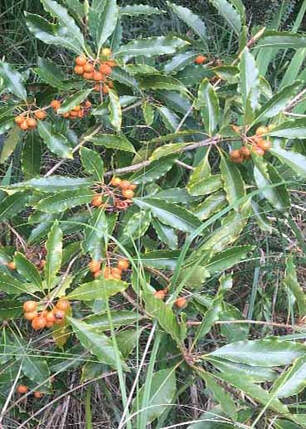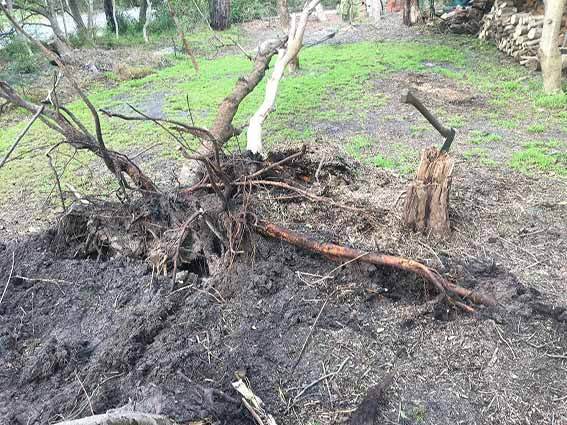 Don’t be fooled by the beautiful foliage and sweetly scented flowers of pittosporum: this plant is a monster.
Don’t be fooled by the beautiful foliage and sweetly scented flowers of pittosporum: this plant is a monster. Pittosporum undulatum, or sweet pittosporum, as it is commonly known, is a small dark green tree with a beautiful canopy and a sweetly scented flower.
Don’t be fooled. This is not a good tree to have on your property. In fact it is one of the worst. It will have been seeded there possibly from a neighbouring tree. Maybe mine.
This species will grow rapidly, spreading its roots, sucking all the moisture out of the ground, at the same time smothering all your other trees by depriving them of sunlight. These are not large trees but they have an enormous root system.
Seed production on female trees is enormous. Each twig produces eight to 10 bright orange fruits. Each of these fruits has a pod containing about 20 seeds, attractively packaged for easy dispersal by birds, possums and other animals which in turn pass the seeds through their bodies to be deposited with fertiliser.
In other areas individual seedlings quickly spring up, sucking the moisture from the surrounding trees and bushes and eventually killing off all but the toughest of rivals. I see them spread through the bush reserves in The Gurdies.
Pittosporum is a declared noxious weed in many areas. Restricting horticultural plantings to male plants is not a solution as most of the male plants also produce occasional fruits. All forms are self-compatible, and plants range from dioecious (distinct male and female plants) to monoecious (a single plant that bears both male and female flowers).
I see people cutting down native gum trees and leaving pittosporums.
On my property of just less than a hectare, I was guilty of not understanding the gravity of the problem until about five years ago. These noxious trees have almost killed off the native trees on my place by smothering and starving them of sunlight and water. It is taking an enormous effort to rectify, which is why I am producing this article.
If you cut them down at the ground, they will sprout again, or the stump will stay alive for years. I drilled some standing trees and poured in Roundup and the side I did not poison survived. I have now had success by drilling in several sides and injecting a mixture of Roundup and Brushoff, but the ultimate solution is to winch them out or dig them out with an excavator. You will understand the gravity of the problem when you see the massive root system these trees have.
If I cut down all the pittosporums on my property, I am presented with a privacy problem as most of the bush has been killed off so as an interim measure I have cut down or defoliated as many female trees as possible, collecting and burning the seeds.
As a custodian of a block of native bush, I still have many trees to remove and many seedlings to pull out.
It only takes one active female tree to produce thousands of seed a year to seed our district. I am talking from hard-earned experience.
